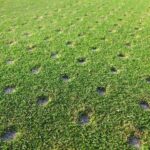Understanding What Pilates Can and Can’t Do for Your Feet
Are you dealing with foot pain, bunions, hammertoe, or flat arches? If so, you’re not alone. Through targeted exercises and thoughtful footwear choices, you can build strength in the muscles of your feet, enhance flexibility, and correct imbalances that might be contributing to these foot problems.
One of the simplest yet most effective exercises for your feet is gripping a towel or a small ball with your toes. Incorporating Pilates exercises like these into your daily routine—even while watching TV or sitting at your desk—can lead to noticeable improvements over time. The key is consistency; strive to perform these exercises at least three times a week to see significant results.
We emphasize the importance of foot strength, often overlooked in favor of larger body parts like legs, arms, and back. However, strengthening your feet is just as crucial as strengthening these other areas.
The Foundation of Your Body
Your feet are the foundation of your body. They provide the base of support, keeping you upright and ensuring proper alignment of your hips, knees, and even shoulders.
Given the essential role they play, your feet need to be strong, flexible, and balanced. But maintaining them in top condition isn’t easy. Everyday activities, like wearing rigid shoes, can leave your feet stiff and weak.
Combatting Modern Life’s Impact on Your Feet
So, how can we counteract the negative effects of modern life and optimize our foot health? The answer, as with the rest of your body, lies in exercise and self-massage, with Pilates being particularly beneficial.
However, if you’ve been neglecting your feet—even while focusing on toning your bum and abs—you’re not alone.
Many people are guilty of this oversight, which is partly why foot pain and injuries, like plantar fasciitis, are so common today.
Fortunately, we’re here to show you how to strengthen your feet through Pilates exercises, offering motivation and guidance. Keep reading, because our team is ready to educate you on why your feet need exercise!
Awareness: The First Step
Do you only think about your feet when you get the occasional pedicure? If so, it’s time to get properly acquainted with them.
Take a moment to tune into your feet. While standing, is your weight more on one side than the other? Is one foot rolling inwards or outwards? Is there more weight on your toes or heel?
Also, take a close look at your feet and feel them. Do they feel sore to the touch, both on the top and bottom? Do you have any ingrown toenails or dry skin? Are your toes relatively straight, or do they claw?
Issues with your feet can have a significant impact on the alignment of your entire body. This means that if you discover any discrepancies in your feet, it’s important to identify the cause and correct it.
Ignoring alignment issues—or failing to fix them through Pilates—can eventually lead to weaknesses and injuries.
Common Foot Problems
1. Weak Feet
Many people mistakenly believe that the foot has only one arch, but in fact, it has three: one along the width and two along the length of the foot.
These arches are formed by the tarsal and metatarsal bones, supported by the ligaments and tendons in the foot. Additionally, there are four layers of muscle in the foot, and the plantar fascia, a thick band of connective tissue, also supports these arches.
When these muscles weaken—whether due to sudden weight gain, wearing poor shoes, or injury—the arches can “fall,” leading to what is known as flat feet. While flat feet aren’t necessarily a problem, weak flat feet are!
Problems Associated with Fallen Arches
The arches of the foot function like springs, absorbing the shock of ground forces when walking or running and helping you push off again. These forces are significant; just walking creates a ground force of more than 1.5 times your body weight, while running increases this to at least three to four times your body weight.
Without these structures, your body is at greater risk of injury. Weak arches can also lead to the foot rolling inwards, a condition known as over-pronation, which brings its own set of problems.
2. Stiff, Immobile Feet
The foot is a dynamic structure composed of 26 bones and over 100 muscles, ligaments, and tendons.
These structures allow your body to make constant adjustments to adapt to different surfaces, protecting you from falls and injuries.
Although people often worry about their feet pronating, it’s important to remember that feet need to be able to pronate (roll inwards) to absorb the shock of landing on hard ground when walking or running. In addition to being mobile, feet must also act as rigid levers to push you off.
This means that, like the rest of your body, your feet need to be both flexible and strong.
In our natural barefoot state, feet naturally develop strong, supple muscles that can quickly adapt to the environment.
However, most people spend their days in restrictive or cushioned shoes with orthotics, which prevent feet from moving naturally. Structured shoes also stop toes from spreading out to support us.
Why Are Inflexible Feet a Problem?
When feet are stiff or weak, they can’t effectively react to or absorb the impact from the ground. As a result, your chances of sustaining an injury when walking or running are greater.
3. Poor Proprioception
Your feet are among the most nerve-rich areas of your body, with the sole of one foot containing over 200,000 nerve endings.
There’s a good evolutionary reason for this: your feet are your contact with the ground, sending sensory information to the brain and receiving signals from the brain in return. This process, known as proprioception, is vital for protecting you from falls and helps you move in the most efficient and agile way.
However, when proprioception is impaired, problems arise. This often occurs due to injury or certain illnesses. Studies on barefoot running suggest that even thick-soled trainers can negatively affect these senses.
Why Is Poor Proprioception a Problem?
Without good proprioception, your ability to react properly to the surface you’re walking on is diminished. This makes it harder to adjust your gait or foot position appropriately, increasing your risk of falls or injury to your feet and lower limbs.
For example, people with multiple sclerosis often have poor plantar-sensory feedback (the sensation on the soles of their feet), affecting their proprioception, gait, and balance.
Impact on Sports Performance
Poor proprioception is a significant issue for athletes, especially runners.
Although human beings are naturally designed for running, the injury rate among runners is surprisingly high. In fact, studies show that 30 to 50 percent of runners sustain injuries over the course of a year.
These statistics are particularly surprising given the widespread use of supportive, high-tech running shoes.
However, new research suggests that these shoes might actually be contributing to some of these injuries by interfering with plantar-sensory feedback.
How Does Footwear Affect Sensory Perception?
While conclusive research in this area is still lacking, the evidence we do have suggests that thick-soled, restrictive running shoes interfere with sensory input.
This is significant because plantar-sensory feedback provides crucial information to the brain about the strength of ground forces underfoot.
We offer three distinctive Pilates north york practices: Mat Pilates, Reformer Pilates and Barre Pilates. For the premier Pilates class in North York, register online or contact Serenev Pilates Studio North York today.

 From Thatch Removal to Greens Aeration: Tackling Common Turf Challenges
From Thatch Removal to Greens Aeration: Tackling Common Turf Challenges  Are customizable betting options valuable in bitcoin dice?
Are customizable betting options valuable in bitcoin dice?  How Do Bouldering Walls Help Improve Climbing Technique?
How Do Bouldering Walls Help Improve Climbing Technique?  Exploring cluster pays- A new approach to winning in online slots
Exploring cluster pays- A new approach to winning in online slots  How do animated backgrounds transform online slots into living game worlds?
How do animated backgrounds transform online slots into living game worlds?  Best Soccer Trophies for Sale, Custom Design Ideas, and How to Make Awards Meaningful for Players
Best Soccer Trophies for Sale, Custom Design Ideas, and How to Make Awards Meaningful for Players  How to Earn Money Online by Playing Fantasy Sports
How to Earn Money Online by Playing Fantasy Sports  Football Training Session: How to Balance Physical Conditioning, Skill Development, and Tactical Play for Optimal Results
Football Training Session: How to Balance Physical Conditioning, Skill Development, and Tactical Play for Optimal Results  Sustainable and Stylish: The Rise of Eco-Friendly Activewear Clothing in Australia and Why It’s Revolutionizing the Activewear Market
Sustainable and Stylish: The Rise of Eco-Friendly Activewear Clothing in Australia and Why It’s Revolutionizing the Activewear Market 